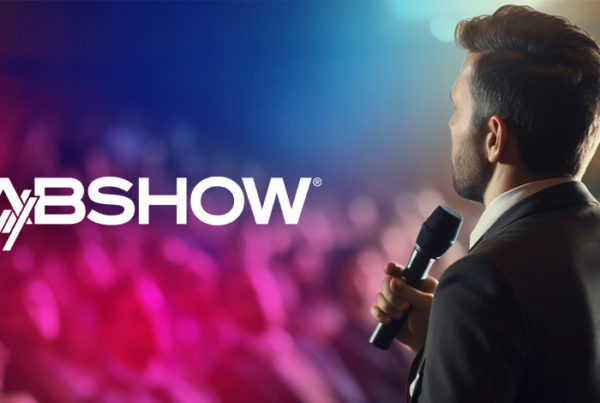At the 2022 NAB Show, several groups released new studies and data on consumer listener preferences. It revealed some surprising and mostly positive audio trends for broadcast radio. After significant disruption to listening behavior, AM/FM radio still has staying power. Let’s break down some of the findings and what they mean for the present and future broadcast radio industry.
Podcast Listener Numbers Are Growing
There’s a podcast for every genre imaginable, and the desire to listen to spoken-word programming is growing. While podcasts were already a highly consumable type of content, the pandemic did introduce more people to highly engaging stories.
Results from the Cumulus Media Audioscape 2022 and Share of Ear report from Edison Research revealed:
- 40% of Americans tuned in to a podcast in the last month as of Q1 2022.
- Listener demographics are shifting, with those aged 12 to 34 decreasing podcast consumption in 2022 and those aged 35 to 54 increasing consumption in 2021.
- Podcast fans love audio, spending 41% more time with it daily versus the general population.
- Spotify eclipsed Apple for the largest share of podcast audiences.
- The podcast median listener age is 33, much younger than AM/FM listeners at 47.
- Most podcast listening occurs at home (69%).
- Podcast advertising is effective because of higher levels of “consumer concentration.”
- Podcast consumers are a desirable advertiser demographic (higher employment, more educated and higher incomes compared to the total U.S. population).
- Marketer/agency spending consideration and intention for podcast advertising increased.
Smart Speakers Soar, Replacing Traditional Radios
The Cumulus Media Audioscape 2022 also looked at smart speaker audio trends. More than 1 in 3 Americans own a smart speaker, with Alexa being the dominant product. Those who use smart speakers hit every demographic from Gen Z to Boomers.
What are they listening to? AM/FM radio, which reaches 64% of smart speaker owners daily. It’s also the most popular ad-supported content for the medium, at 39%. The profile of these listeners is “upscale,” relating to employment, income and education.
OTA Radio Still Commands Top Spot for Ad-Supported Audio
While podcast listening grew, as did subscriptions for ad-free platforms, OTA radio is still the undisputed leader in ad-supported audio. According to the latest Share of Ear report from Edison Research, AM/FM radio accounts for 76% of the daily audio time for ad-supported platforms.
However, the study explained that this reality is far from advertiser perceptions. Advertisers believe AM/FM radio has a significantly lesser share. As such, radio broadcasters have to debunk those myths when engaging with advertisers.
The study also found that AM/FM radio was actually pandemic-proof. It’s only down three points from 2019. In where people listen, AM/FM radio is the leader at work and home and in the car. Another critical tidbit from this research is audibility, which describes if people can accurately hear ads. The data states that 75% of AM/FM radio listeners can understand ads, much higher than for Spotify or Pandora.
The State of AM/FM Radio Streaming
The third body of research regarding audio trends is the State of AM/FM Radio Streaming Q1 2022. Its findings support that AM/FM radio streaming is growing, at 15% — an increase of 7% from 2016. The majority of streaming is spoken word (news/talk). The streaming audience of AM/FM is larger than that of Pandora and Spotify combined.
Some interesting nuggets from the study relate to frequency. Half as many ads are required in the AM/FM radio stream to achieve the same frequency levels as OTA AM/FM radio. For advertisers with smaller budgets that want to have an impact, streaming may be the better choice.
Radio Listeners Are Attractive to Many Categories
Data supports that radio listeners trust local stations and personalities. They are also more likely to listen to the ads, as evidenced in the audibility findings. The Share of Ear report pointed out some attractive characteristics of radio listeners. In fact, 75% of audio time for registered voters is with AM/FM radio, making it a well-suited channel for reaching them during this year’s midterm elections.
The streaming study indicates some other attributes, including:
- The AM/FM radio streaming audience is more likely to be full-time employed and has a $75K+ household income.
- The AM/FM radio streaming audience is far more likely to start a new business, make major purchases (new vehicle, new house, major appliance), make financial investments, or be in the market for insurance.
Key Takeaways and Insights from the Data
- The pandemic was an accelerant for podcast consumption. The data already indicates declines from 2021. As the world emerges from the pandemic, podcasts could lose listeners. Alternatively, people may still tune in but do so outside their homes. To capitalize on this audio trend, stations should consider diversifying into podcasts. You can monetize podcasts in a similar way as OTA with traffic systems.
- Radio is still a viable channel that has reach and drives engagement. This data helps broadcast sellers dismiss the misconception that no one listens to radio anymore.
- While alternative audio consumption categories are growing, broadcast radio remains firmly atop ad-supported platforms. That’s unlikely to waver. With more people back to regular commuting by car, their time with AM/FM radio could increase.
- The Share of Ear report said that 70% of Spotify listeners subscribe, so it’s not a huge threat to broadcast radio. The percentage of subscribers for ad-free increased by 13% from 2016.
- AM/FM streaming is growing, having a lot to do with the adoption of smart speakers and the decline of radios in the home. Fewer people own radios in the home in 2022 than in 2018. Smart speaker ownership increased and is vital to broadcast radio. That must be a channel that broadcast radio optimizes and is a more cost-effective advertising option.
- Radio listeners are your advertisers’ target audiences. They have greater purchase intent than other groups and overall are more educated, employed and paid. Use these data points to make the case to advertisers that want to abandon AM/FM radio advertising.
Audio Trends: AM/FM Radio Still Reigns
While the latest audio trends don’t all favor broadcast radio, they do reinforce what we already know — local radio matters. It matters to listeners and advertisers. Share these insights with advertisers as you develop new campaigns. You can also use them as part of your pitch to prospective customers with inaccurate perceptions.
Get more information about maximizing OTA revenue by reading our post on radio spot dynamic pricing.






